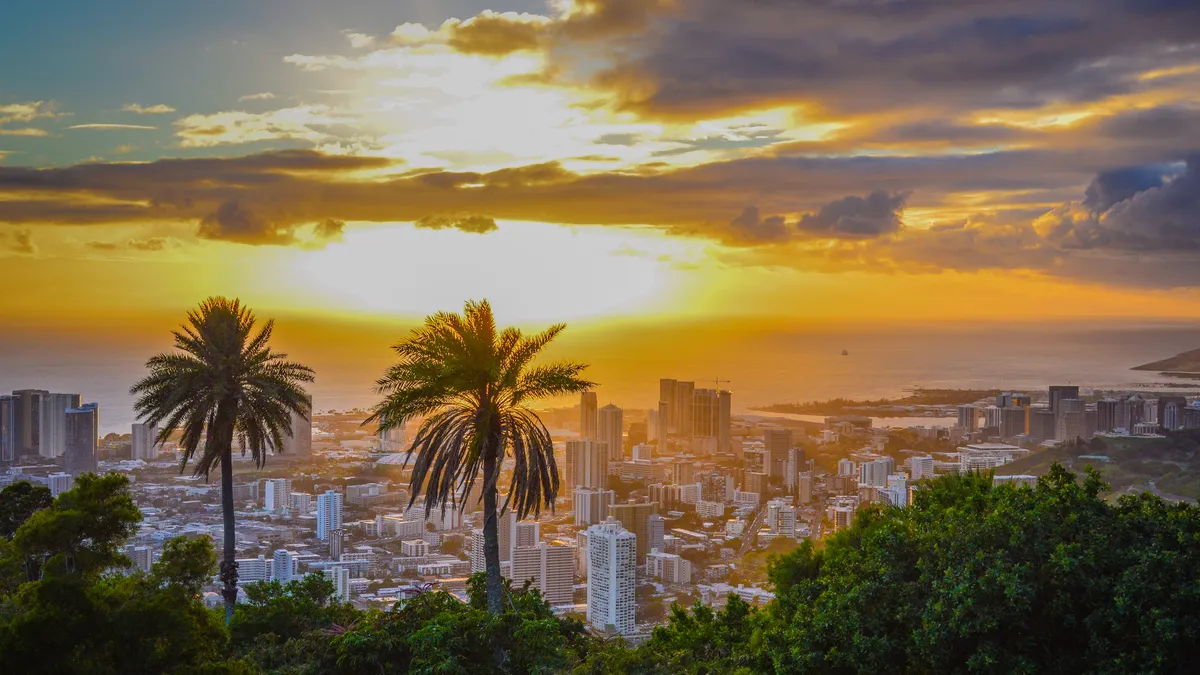Dive Brief:
- Both utility-scale energy storage and distributed storage resources will play a key role in helping Hawaii maintain the reliability of its grid as it prepares to shutter a 180 MW coal plant on the island of Oahu, experts said at the Hawaii Energy Conference on May 10.
- “We really need to utilize all of it, especially to meet our 100% decarbonization goals,” Scott Schalich, market lead at energy storage company Plus Power, said at the conference. “I think both provide unique benefits to the grid,” he added.
- The AES-owned coal plant currently meets 15% of electricity demand on the island but is slated to retire later this year. Hawaiian Electric is looking to replace it with renewable and storage resources, but regulators have raised concerns that delays to those projects could pose a threat to grid reliability.
Dive Insight:
Last February, the Hawaii Public Utilities Commission opened a docket to take a closer look at Hawaiian Electric’s plan to retire the Oahu plant, as well as the renewable projects intended to replace it. One of their concerns is that without adequate planning, the plant might have to be replaced with oil-fired generation.
Hawaiian Electric is also looking at closing down other fossil fuel plants, including the 38 MW oil-fired Kahului plant by 2024, as well as two units of a Waiau oil plant totaling 49 MW.
Last June, the commission approved an emergency demand response program aimed at mitigating possible resource shortfalls after the coal plant’s planned retirement. The effort included a scheduled dispatch program, as well as expanding a pre-existing fast demand response initiative. The up to 50 MW scheduled dispatch program was designed to be open to customers that have distributed energy resources, and are able to add new battery storage capacity to it. Customers are committed to the program for 10 years, and will receive upfront incentives.
Different kinds of storage technologies will play a role in bolstering reliability and resiliency, Schalich said at the conference.
Plus Power is the developer of the Kapolei Energy Storage project, a 185 MW/565 MWh facility that is currently under development on Oahu. The project, earlier scheduled to come online in the summer of 2022, was one part of Hawaiian Electric’s plan to ensure grid reliability after the retirement of the AES coal plant. It is currently expected to come online March 10, 2023, Hawaiian Electric spokesperson Shannon Tangonan said in an email.
"Given supply chain issues and other challenges developers are facing, we’re pleased with the Kapolei Energy Storage project’s progress. We have other solar-plus-battery storage projects coming online before KES that can provide additional capacity and reliability following the retirement of the coal plant in September," she added.
“KES is a really large project at scale that’s completely, fully dispatchable,” which will help Hawaiian Electric with load shifting as well as fast frequency response, among other capabilities, according to Schalich.
Hawaii needs both utility-scale and distributed storage, Daniel Crotzer, CEO of energy storage controls platform Fractal EMS, agreed. In some cases, the region does not have transmission paths to bring renewable resources into areas experiencing a lot of load, “so it would be nice if you had some more local, distributed renewable sources,” he said.
At the same time, distributed energy resources do present a layer of complexity, said Jon Fortune, vice president of grid services market development at Swell Energy.
“[T]hey’re often doing more than just serving the grid – they’re serving customer needs,” he said, adding that unlike stationary storage systems, EVs, for example, aren’t plugged in all the time and available to serve as a grid resource.
But distributed storage does present an opportunity when scaled up, such as the program on Oahu, Fortune noted.















